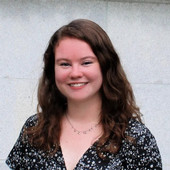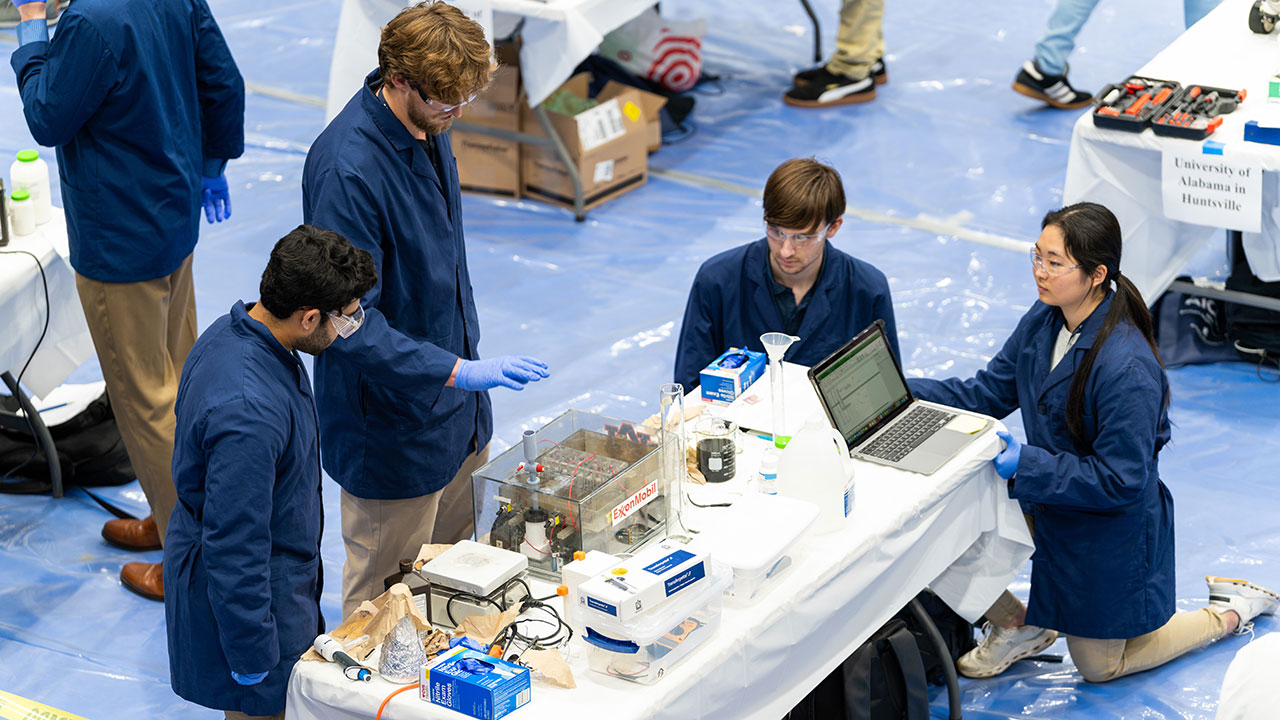Auburn chemical engineering students make statement at AIChE Southern Regional Conference
Published: Apr 1, 2024 7:00 AM
By Joe McAdory
What a weekend for Auburn University’s American Institute of Chemical Engineers (AIChE) student chapter! Not only did Auburn host the national organization’s Student Southern Regional Conference on March 15-16, but Auburn chemical engineering students won first place at the regional Chem-E car championship, finished a close second in Chem-E Jeopardy and captured top honors in the technical presentation and research poster competitions.
About 200 of chemical engineering students from roughly 30 universities across the south visited campus to display their individual research prowess through poster presentations, toured nearby chemical engineering-related industrial complexes, the Rane Culinary Science Center and the university’s Design of Coffee class (CHEN 1000).
“The Auburn spirit drove us to do the best that we could do,” said Ishan Patel, Auburn AIChE chapter president. “The year-long preparation for this conference, involving faculty members, AIChE executives, numerous chemical engineering students, and even non-chemical engineering students from Auburn, culminated in the Southern Student Regional Conference being an exceptionally well-organized and seamless event that all attendees thoroughly enjoyed. It was here that Auburn was able to showcase the amazing hard work and dedication we have within our department and the amazing students and faculty that make up this department.
“The conference not only ran smoothly, but it also provided a platform to showcase the talent of our students, with Auburn participants consistently securing top positions in each event throughout the weekend.”
Four months removed from winning the AIChE international championship at the organization’s student conference in Orlando, Florida, Auburn’s 20cm x 30 cm x 40 cm Chem-E car came through again, stopping just 0.83 meters from the target distance inside the gymnasium at nearby Auburn Junior High School after completing the 25-meter run. The closest car to the finish line wins.
Team members included Emma Kim (captain), Hannah Whieldon (design lead), Hudson Hargrave (power lead), Jerin Thomas (safety lead), Greydon Franck (stopping lead), David Swafford (technical lead), Ben Howard (technical), Arthur McPherson (power), Brian Wortmann (design), Drew Moellering (design), Gabriel Smouse (technical), Graham Mobley (technical), Katie Wolfe (technical), Saim Siddiqui (stopping), Samir Kris (technical), Stephen Marble (power), Zachary Bradford (stopping) and Debora Vasconcelos (power).
“Winning regionals showcases each of our members’ dedication and hard work when it comes to weekly meetings and even putting in the extra hours to bring the car together,” said Kim, a junior in chemical engineering and captain of Auburn’s Chem-E Car Team.
How does the car work? When turned on, the motor takes energy from a lead-acid battery, causing the wheels to turn. Due to the constant voltage of the battery, the car moves roughly about 0.32 meters per second. Inside, an iodine-clock reaction occurs alongside a light sensor. Once the reaction is complete, the solution, read by the light sensor, quickly morphs from clear to dark. Light is no longer recognized, halting the motor and, effectively, the car.
Shifting gears, Chemical Jeopardy had many of the same elements as the popular TV game show. Each game comprised of a single jeopardy round, followed by double jeopardy, then a final jeopardy question. Game boards consisted of six categories, with five related to chemical engineering or STEM, with a sixth “wild card” category.
For example:
- Category: Reactions and Reactors. Clue: The rate of reaction (ra) is usually normalized by either the reactor volume, or this. Response: What is the amount of catalyst?
- Category: Periodic Table Trivia. Clue: It’s the only letter which has never appeared in the English language periodic table. Response: What is J?
Of two Auburn teams competing in the 15-team field, one reached the finals. Those students included Jake Robinson, Harrison Edwards, Cameron McMahon and David Johnston.

In the poster presentations event, chemical engineering students Alison Brown won first place for best presentation of her project, “Enhancing Contractile Function of Engineered Cardiac Tissues Through Enriched Fatty Acid Media Cultivation,” while Emma Kim won first place for technical presentation of her project, “Computational Analysis of Maturation in Differentiated Cardiac Cells.”

“The success of our Chem-E car team, Jeopardy team and poster presentations at the regional conference reflects highly on the strength of the chemical engineering program here at Auburn,” said Sam Sessions, a senior in chemical engineering and Auburn AIChE treasurer.
“Not only are these students successful in their studies, but they are also successful in designing cars that run on a chemical reaction or knowing specific details about certain topics of chemical engineering. Their success can be credited to their drive and hard work of those on the team and the support of their fellow AIChE members and classmates. Each person on those teams takes time out of their busy weeks and commits to learning more and achieving great things.”
Since its founding in 1908, AIChE features thousands of members from more than 110 countries, provides members with industry-networking opportunities, resume-building, co-ops, full-time employment and exposure to diverse areas of interest in the field. Its annual national convention will be October 27-31 in San Diego.
Media Contact: , jem0040@auburn.edu, 334.844.3447
Chem-E car team members prepare Auburn's battery-powered vehicle to start, and then stop via a timed device.

